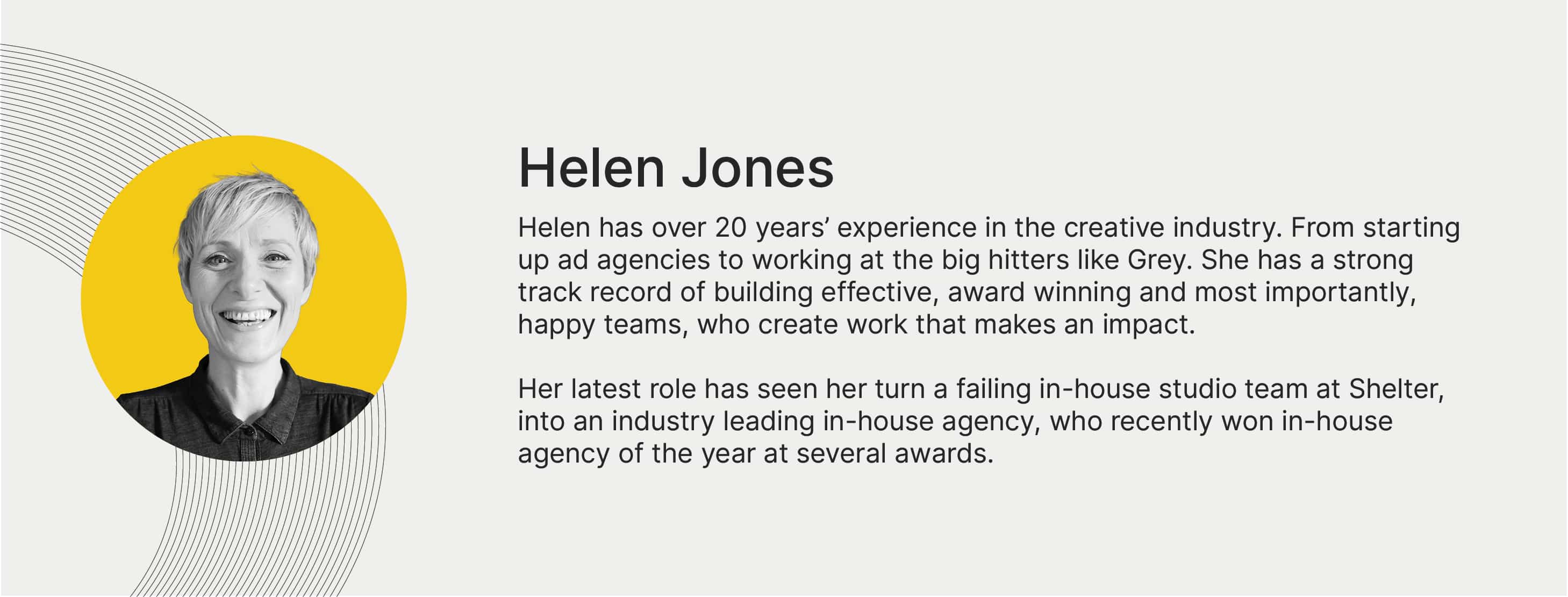After spending most of my career in agencies (and loving almost every minute of it), my move to an in-house role was much more of a shock to the system than I expected. I thought I could take my advertising experience and simply apply it to the in-house model – but it wasn’t that simple. Here are some of the mistakes I made along the way and the lessons I’ve learned from them.

Not All Surprises Are Good
In agency life, I always loved pitch days. I prided myself on building excitement in the room—creating drama and anticipation leading up to the big reveal. What you might call the ‘ta-dah’ moment. But I quickly realised that surprises can be counterproductive when working in-house. You need to embrace the advantage of having everyone you need right on your doorstep and move away from the “them and us” culture that often exists in agency/client relationships.
Now, I encourage my team to let their marketing colleagues “behind the curtain” and truly see how we work. There’s no need for smoke and mirrors. We try to keep them involved every step of the way. We collaborate on developing the brief and the proposition, and we have regular catch-ups throughout the process. So, when we do present, there shouldn’t be any big surprises. I’ve found that this kind of early collaboration enhances the idea, rather than hindering it.
I’ll admit, this collaborative approach can be tricky when dealing with a large number of stakeholders from different disciplines. You might not be able to keep everyone involved at every step, but it’s crucial to get the right people informed and engaged at the right time. Think about whose expertise can help you spot the pitfalls and whose expertise can evolve your thinking. Can early advice from the media team help you make it more PR-able? Will the social team suggest a TikTok angle you haven’t thought of? Don’t keep the idea to yourself – cross-collaboration is key.
Creativity Isn’t Your Only Currency
When I worked in an agency, creativity was king. As a creative, I felt like I was at the centre of the agency’s universe. But once you go in-house, you get a wake-up call. The creative team is simply another function within a large organisation — often not seen as key to the business. Once you’re in-house, no one cares if you win awards or what creative magazines the work you do gets into. What they care about is the value you deliver and the results you get.
So, as an in-house Creative Director, you have to find ways to prove that value. Of course, this doesn’t only mean financial value, but let’s be honest—money talks.
The best decision I made was to do an in-depth piece of research comparing our costs with agencies and freelancers across various project sizes. What surprised the organisation was that we were more expensive than freelancers for small jobs that didn’t require strategic thinking or a deep understanding of the brand. However, where we really saved the company money was on mid- to large-sized, complex projects. In fact, the bigger the project, the bigger the savings. Additionally, having an in-house team that knows the product and brand inside out—and can work closely and quickly at all levels of the organisation—was a significant advantage. This allowed us to take on more strategic work, shifting the usual model of assigning in-house teams only the smaller projects, and ultimately earning trust for larger, more impactful work.
Being Good Isn’t Good Enough
For the first year in-house, I thought that if I just helped the team deliver excellent work, that would be enough to start getting in more interesting and challenging briefs. But I was wrong—doing great work alone isn’t enough. If you want to get more than just the scraps from the table and take on the bigger briefs, you need to make sure you, your team, and your work are noticed.
First, I changed the team’s name from “The Studio” to “The Creative Team.” It was a way to signal a change. I invited the entire organisation to a series of “Meet and Greets” to talk about the new team, our new ways of working, and what we could bring to the table. I also set up regular “Show and Tells” to share the great work we were doing. Most importantly, I created a deck that clearly outlined the value we brought to the company and asked to present it to the board. This wasn’t just about showcasing our creativity—it was about highlighting the financial benefits our team brought to the organisation. By doing this, we embedded our importance at the highest levels of the company.
Embrace the Difference
For years, I fought to make our in-house team as respected as any agency. But I’ve come to realise that we don’t need to compete. We each have our unique value. I’ve learned to stop trying to do everything in-house. It’s essential to know what you’re great at, where you can add value, and when it’s time to bring in outside expertise.
My advice to anyone making the jump from agency to in-house: embrace the difference. It’s not the same, but that’s what makes it great. Working in-house means you can build stronger, more collaborative relationships, which ultimately lead to better work. I loved my time in agencies, but I believe I can achieve so much more in-house.





